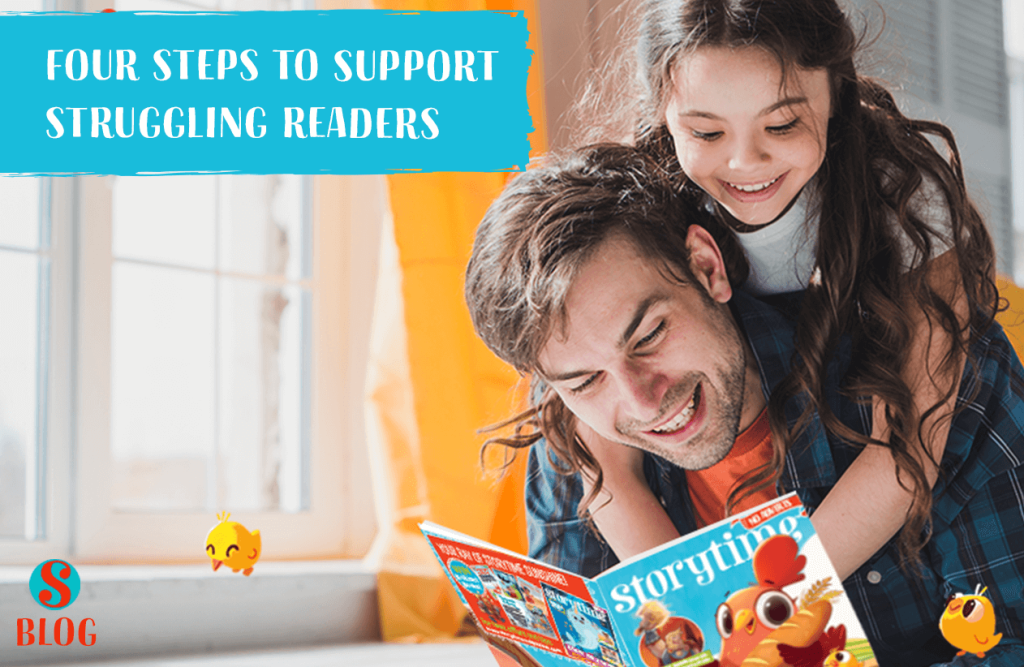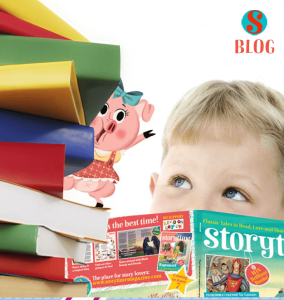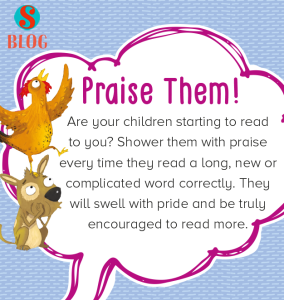One of our key aims at Storytime is to share our love of reading with as many children as possible – but for some children, reading is a challenge.
Children with Special Educational Needs (SEN) can have a hard time learning to read as sometimes their condition affects the development of their foundational language and social skills. Even those who have learnt to read may struggle with comprehension, which can greatly impact their confidence and performance at school. It is estimated that almost a fifth of all children in UK schools have special educational needs (SEN) that affect their reading, and most of them are educated in mainstream schools that have limited resources[1] to help them.
It can be daunting to realise that your child has severely fallen behind their peers, and parents may at times feel that they are facing an unsurmountable challenge when supporting their child’s learning. However, there are some simple strategies and tools that parents, carers and educators can use to support their children and positively impact their reading and learning processes.
[1] Source: Department for Children Schools and Families Building Bulletin
1. Choose the right books
When trying to engage a child with reading it is essential to choose the right books to begin with. Some material might be overstimulating, and others are not stimulating enough. It is crucial to strike the right balance.
Choosing a book in line with your child’s interest is a good start. Choose the story together – let the child pick their favourite theme or topic as they are more likely to engage with it when reading.
The layout of the book or magazine should be simple and easy to understand. Changes of pace in stories make it easier for the child to follow the plot, and stories with a slower pace will be easier to follow for beginners.
Illustrations are a useful tool to help a child connect with a story and facilitate imaginative play. Artworks can trigger a range of feelings and inspire us to investigate further what we are seeing or hearing, and can be especially helpful for children with SEN, who often learn better with visual stimuli.
2. Put some time aside to plan the stories
SEN children often benefit from routine and consistency, so create a regular timeslot in the evening for reading with your child. Even five or ten minutes can make a difference!
Do some preparation before reading with your child – go through the story highlighting the words that are repeated most often or are onomatopoeic, as this will help them understand the structure of the story. Point out the trickier words and explore them. Make a glossary in the form of a deck of flashcards, with drawings which will help them to form mental images. Then, when you do read the story together, you do not have to stop too much to explain things.
I do a lot of historical research for my stories, then filter out things that might be too complex or gory for the target age group. However, I do my best to give the ‘flavour’ of an era.
3. Shared Reading
Shared reading is incredibly important when it comes to encouraging any child to read, and this is especially true for children with SEN. This is a simple process which helps bond the parent and child and, if done on a regular basis, it may considerably enhance a child’s reading ability. Here are a few more pointers:
- Sit side-by-side with your child so that they can see the pages you are reading.
- Take your time and use the images as a starting point for exploring and discussing the story with your child. For instance, look at the cover together; what could the book be about? Get your child involved in the story from the start and encourage them to talk about it.
- When reading the story, point to the illustrations and follow each word with your finger, so that your child can associate the sounds they are hearing with the letters they see.
- When reading aloud, put lots of expression into your reading so that your child can copy what you are doing. You could use different voices to create more engagement or choose other reading styles which may better suit your child such as picture reading for instance. You can also share the storytelling roles and give a character to your child so they can play a role too.
Encourage your child to repeat any rhymes or repetitions out loud. Praise them often.
4. Have a conversation
When you have finished reading, talk to your child about the story, ask them questions, engage with them, and encourage them to talk. And praise them again! Praise and rewards are a great way to keep them motivated and engaged in the activity.
Follow-up conversations may also help with reading comprehension, which is a critical building block for effective literacy development. This is also an opportunity to help them understand the narrative, analyse the characters and the plot, and build their vocabulary. All this reinforcement helps them to consolidate their knowledge and comprehension.
Finally, it is important not to get discouraged! Most children with SEN will learn to read and enjoy storytelling. It is sometimes just a matter of time – many children eventually develop a real love for reading and turn into real bookworms. Reading plays a huge role in a boosting a child’s confidence, personal development, and academic achievement. It is a gift that lasts for a lifetime.
We hope that sharing the gift of stories will lead to some amazing, shared moments! Many children with SEN can connect with and learn from characters in stories. Tales can teach us to communicate emotionally while also developing literacy levels.
We developed Storytime with struggling and reluctant readers in mind – because we believe that with the right support and strategies, children who are struggling with literacy can blossom, and even become avid readers. A magazine is usually less intimidating than a book, and easier to complete for less confident readers.
The huge variety of subjects in Storytime means that there is a story in it for everyone, and the different levels of difficulty allow the readers to progress through the issue from shorter to longer stories without feeling intimidated. Colourful bright illustrations and the lack of adverts help to keep the readers engaged with each story with no distractions!








